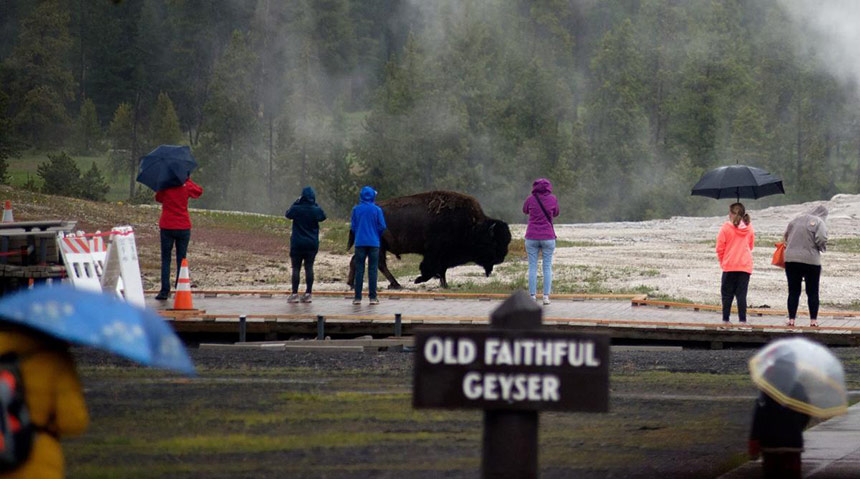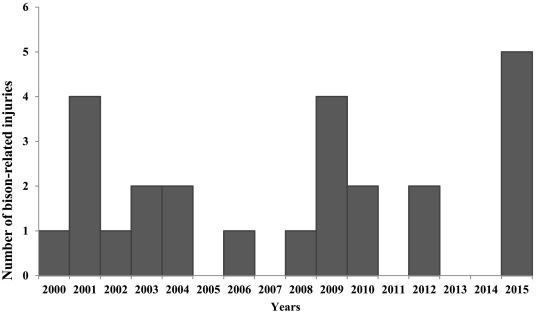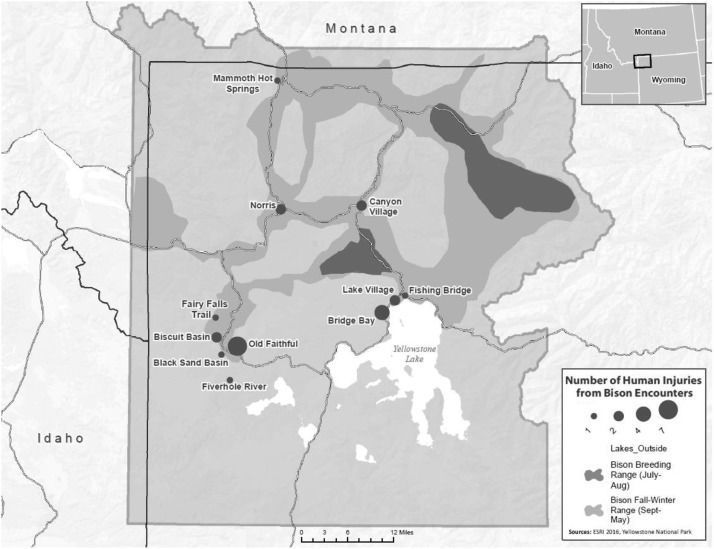Some tourists get too close to Yellowstone’s bison, despite hearing warnings, study shows
Published at
From informational pamphlets handed out to tourists at the gates of Yellowstone National Park to roadside informational signs and displays in its visitor center, the park’s staff tried to teach visitors not to get too close to wildlife.
A new study state that might not be enough to keep bison, the park’s most dangerous animal when it comes to tourist injuries, from harming visitors.
“Education alone is not sufficient to reduce bison-related injuries,” according to the study, which examined the causes of human injuries by bison between 2000 and 2015 at the park.
Yellowstone officials could not be reached for comment on this story due to the government shutdown.

Too close
Cara Cherry, a veterinary epidemiologist at the Centers for Disease Control and Prevention, was the lead author of the study. She conducted somewhat similar research in 2015 that identified cell phone photos as a rising cause of injuries to Yellowstone tourists.
With the short focal length of cell phones, and the increase in posting photos on Facebook or Instagram while traveling, people may be ignoring park warnings about keeping their distance from bison, Cherry wrote.
RELATED: Yellowstone tourists put bison calf in car because they’re worried it’s cold
In Yellowstone it is illegal to be within 100 yards of bears and wolves or 25 yards of bison and other wildlife. Yet the study showed people hurt by bison were on average only 11 feet from the big animals, which can weigh between 1,000 and 2,000 pounds and run at speeds up to 35 mph.
RELATED: Video of man harassing Yellowstone bison leaves people outraged
Injured
Here’s how those 25 people behaved, according to the study:
- 20 people, or 80 percent, actively approached bison before they were hurt.
- 5 people, or 20 percent, didn’t back away when bison approached.
- 15 people, or 60 percent, were hurt when in a group of three or more people who approached bison.
- 12 people, or 48 percent, were hurt while photographing bison.
- 6 people, or 24 percent, acknowledged they were too close to bison.
Although groups of people close to wildlife may make tourists feel safer about approaching the animal, crowds likely have the opposite effect on the animals, making them feel threatened and therefore more likely to charge.
RELATED: Woman gored by bison in Yellowstone after crowd gets too close
All of the injuries were in areas of the park crowded with people, like Old Faithful.

Education
“Educational campaigns rely on the assumption that increasing awareness about risk-enhancing behaviors will change those behaviors,” the article noted.
Yellowstone even provides its warnings in different languages and gives tour buses information on thumb drives to educate Chinese tourists who have become more common in the park during the past few years.
But in studying injuries in Yellowstone the authors found that even though some people were aware of the dangers of getting too close to bison, the tourists ignored their own fears or misgivings when other people approached wildlife. They incorrectly assumed there might be safety in numbers.
RELATED: Bison tosses 72-year-old woman off trail in Yellowstone
One woman injured by a bison “recounted to park rangers that her family read warnings in park literature and signage about not approaching wildlife, but when they saw other people close to bison, they thought they would be safe. A witness to another incident stated the injured person started creeping toward the bison to get better pictures and eventually was at an unsafe distance from the animal. Other photographers saw his example and started moving closer to bison as well.”
Ideas
The first step the park should undertake to try and reduce the number of injuries is to identify “the specific risk-enhancing behaviors that lead to human-wildlife injuries,” the study advised.
RELATED: Woman flown to EIRMC, man injured in bison incident at Yellowstone
The research goes on to identify those key behaviors as “maintaining an appropriate distance from bison, especially for photography, and not crowding bison.”
Bison injuries do appear to be declining, so all of the educational material must be having some effect. According to the study, an earlier analysis showed that between 1980 and 1999 bison injured 79 Yellowstone tourists. Interestingly, those injuries occurred even though the average distance from the animals was farther — about 29 feet — “indicating that persons are moving closer to bison than they did in the past.”
Low risk
Even though bison can be viewed as the most dangerous animals in Yellowstone, the incident of bison-related injuries is fairly small considering that during the study period an average of about 3.3 million people visited the park each year.
Visitors are more likely to be injured driving in Yellowstone as tourism increases. For example, in 2014 there were 18 vehicle accidents with injuries. That jumped to 48 in 2015.
A study of European bison in Poland showed they were more likely to run away from tourists.
“We conclude that bison are not aggressive animals and usually flee when encountered by humans,” the study reported. “Bison attack only in specific conditions when approached at a close distance and disturbed for a prolonged period of time. Most bison attacks have the form of a short chase and are directed mainly at people which cross this critical distance.”
RELATED: Yellowstone plans to ship 600-900 bison to slaughter this winter
This article first appeared in the Billings Gazette. It is used here with permission.





